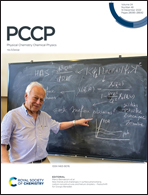Engineering of graphene flakes in the process of synthesis in DC plasma jets
Abstract
During the pyrolysis of hydrocarbons in helium plasma jets in a plasma-chemical reactor, graphene flakes of a different structure and resistance were obtained. The presence of hydrogen in these structures was established by physicochemical methods, and its content depends on the pressure in the plasma-chemical reactor and the composition of a plasma-forming system. In addition to hydrogen, a relatively low concentration of oxygen atoms is present in the graphene flakes. Hydrogen is involved in the graphene nucleation, whereas oxygen is absorbed on graphene flakes from the air at low temperatures. It was found that a pressure increase in the reactor (up to 710 Torr) leads to the formation of flakes with a low resistivity (0.12–0.20 kOhm sq−1) and low defect density. In the case of synthesis at a low pressure (350–500 Torr), the resistance of graphene flakes is increased by three orders of magnitude (100–400 kOhm sq−1) with a more complicated defect structure and built-in hydrogen. Moreover, hydrogen is difficult to remove from these flakes, and annealing at relatively high temperatures (up to 300 °C) leads to a weak decrease in the resistance due to flake deformation. Additionally, the functionalization of the graphene flakes synthesized at a low pressure with fluorine atoms is suppressed due to their structural features. In general, the selection of growth parameters (gas pressure in a camera, flow rate and content of impurity atoms) allows one to control the defects in graphene, and its structure and conductivity.



 Please wait while we load your content...
Please wait while we load your content...